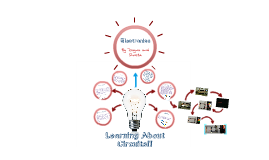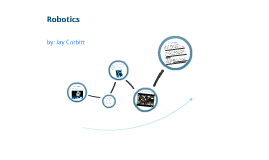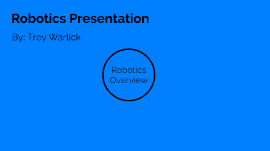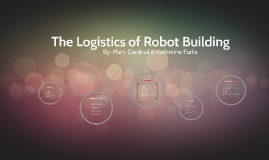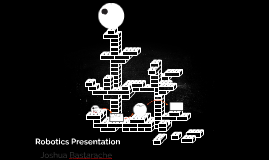Robotics Presentation
Transcript: https://en.wikipedia.org/wiki/Electricity http://www.robotshop.com/blog/en/top-10-robots-of-the-past-10-years-robots-of-the-decade-awards-3743 , to just about everywhere else in the world, the industry began modern development for automobiles, airplanes, machinery, and radios. What Did This Mean For The Future? https://en.wikipedia.org/wiki/Lester_Allan_Pelton In the present day, 2017, we see robots evolving into just about everything in our daily lives. Some examples are the Tesla S, which has an automated driving feature allowing it to have no driver, the new Wendy's and McDonald's self-serve automated kiosks which do the full job of a cashier, and the LG Personal Mini Home assistant which is an automated personal assistant. Going into the 2000s, Robotic inventions such as Packbot started appearing. Packbot, a military-used automated bomb detection device that could drive around on it's own route, showed the real potential for robots. The industry for robots was furthering the technological advancements, to developing more and more complex and sophisticated robots for the work force. https://www.thestar.com/business/2015/09/30/mcdonalds-canada-introduces-self-serve-ordering.html This meant that now people could create networks such as the Internet (1960s), which created instant-communication to across the globe. Robots utilized this new discovery, for example: improved long distance communication, remote reprogramming and location tracking. Present Day Hitting the 2000s (1890s) (Not actual picture of time frame) Today, we see an increasing number of multi-functional robotic devices that constantly surround our lives. Devices like modern cellular telephones, heavy equippment, weapons, cars, etc. can all be programmed to do anything they are told to do, and some even can make their own decisions. (Not actual picture of time frame - robots in this time were all mechanical springs, gears, and crank-to-operate) (1900s) At around the 1900's is when robots really became important. 1914, when World War 1 began, the need for an electrical device that can perform pre-programmed tasks began enormous. People needed systems that could track their location, they needed fuel-injected engines, they needed robots. In no time, the Macintosh was revealed as the first affordable at-home computer that could operate games and solve complex mathematical equations that took other methods far too long. Which in itself spiraled an industry of electronic goods, bringing technology into almost every household. Industrial robotic devices such as automated sliding doors, automated autmobiles, and automated factory lines were also popping up to create increased revenue for companies. The first "modern computer," in 1946, was revealed. The ENIAC was a $6,740,000US(in today's currency) supercomputer that calculated mathematical missile firing locations. It ran on vacuum tubes and weighed a whooping 4 tons. It could calculate trajectories 2,300x faster than the previous human-performed method, making it the ideal foundation for a modern robotic revolution. The Modernization and Development Computers! They're here! They're Everywhere! Is it bad? https://en.wikipedia.org/wiki/ENIAC Joshua Bastarache






